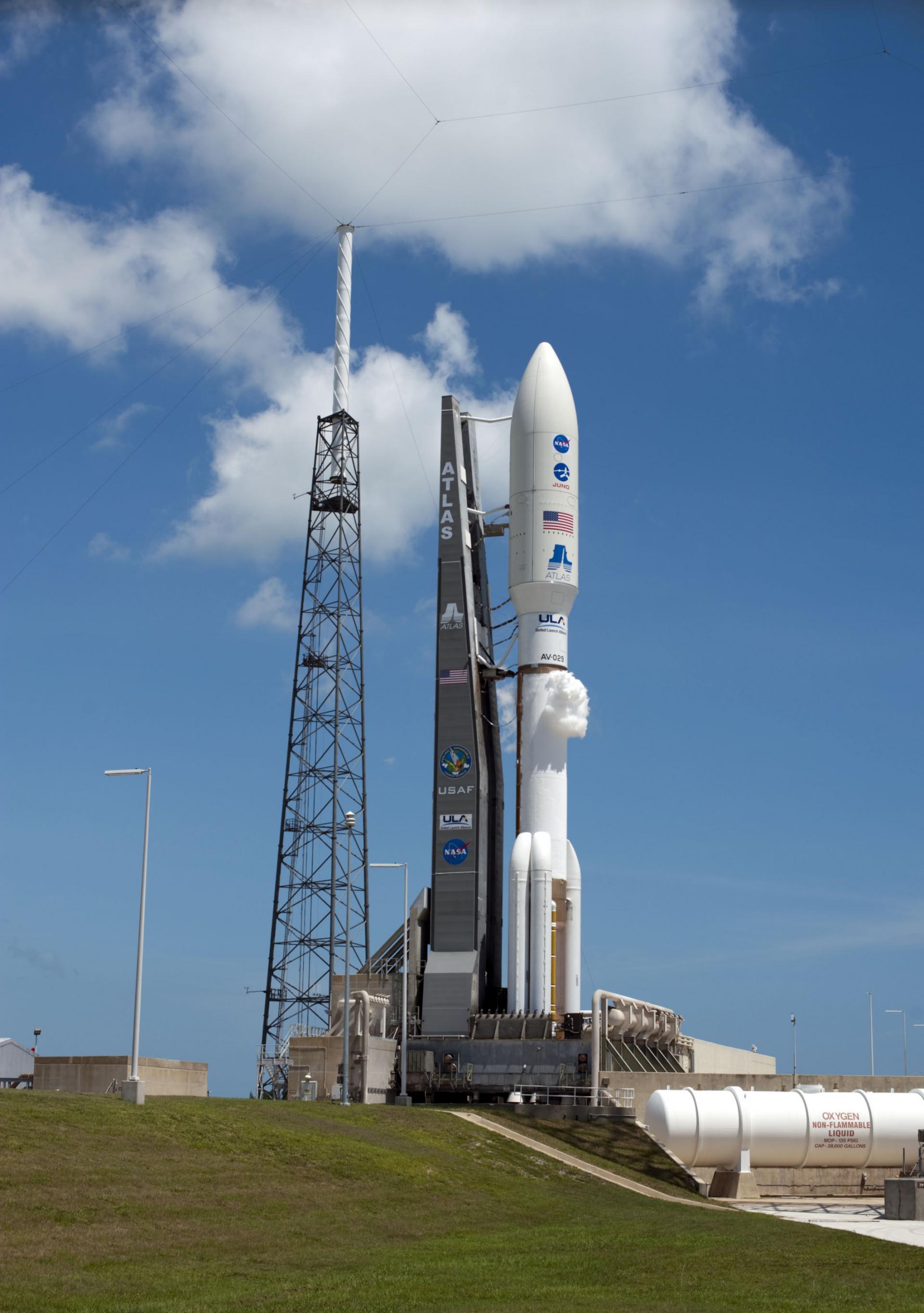· space brief · 6 min read
Space Brief 30 Jun 2025
Today's highlights include SpaceX's record-breaking launches, Japan's final H-2A launch, and significant developments in satellite data policies impacting weather forecasting.

📄Top Stories
SpaceX has achieved a new milestone by launching two missions from the same pad within two days. Meanwhile, the final H-2A rocket from Japan has launched successfully, marking the end of an era for Japanese space exploration. In policy news, the Defense Department has announced the cessation of critical satellite data programs affecting weather forecasting.
📰Detailed Coverage
SpaceX Breaks Own Launch Pad Record
On June 28, SpaceX set a new record by launching 27 Starlink satellites just two days after a mission from the same launch pad in Cape Canaveral. This marks SpaceX’s ability to rapidly turn around and prepare its facilities for successive launches, underscoring its operational efficiency and commitment to expanding its Starlink internet constellation.
The subsequent launch from California further exemplifies SpaceX’s robust launch cadence, with the ability to support back-to-back missions from different geographical locations. These feats are made possible by significant advancements in technology and meticulous planning. For those tracking satellites, these frequent launches expand the opportunities to observe dynamic orbital changes; our web app can provide real-time updates on these new entries.
Read the full story: SpaceDaily
Japan’s Final H-2A Launch
Japan’s iconic H-2A rocket has embarked on its final flight, successfully delivering an Earth science satellite into orbit on June 28. This launch marks the end of a chapter for the vehicle that has been pivotal in establishing Japanese space capabilities over the past two decades.
The Earth observation satellite launched on this mission will help gather data critical for climate research and disaster monitoring. The H-2A’s retirement paves the way for newer technologies to take center stage in Japan’s space agenda, with the H3 series expected to build on its legacy. Tracking and data collection from this final mission remain accessible through various satellite observation tools.
Read the full story: SpaceNews
Defense Department’s Satellite Data Program Withdrawal
The Defense Department has decided to terminate its satellite data programs that are essential for weather forecasting, effective immediately. This decision, announced recently, removes a vital source of meteorological data just as the peak hurricane season approaches.
The termination of the Defense Meteorological Satellite Program data could disrupt weather predictions and analysis. Users relying on this data, particularly forecasters and researchers, might need to look for alternative sources to fill the gap left by this policy change. Understanding the impact of these shifts could be aided by satellite tracking platforms that offer diverse data alternatives.
Read the full story: TerraDaily
Kongsberg Finalizes N3X Satellite Network
Kongsberg Defence and Aerospace has completed the deployment of its N3X satellite constellation by launching two additional microsatellites from SpaceX’s Transporter-14 mission. This satellite network is designed to enhance maritime domain awareness and bolster Norway’s surveillance capabilities.
As maritime activities continue to rise, the N3X network will play an essential role in monitoring and tracking shipping routes and territorial waters. The constellation uses advanced technologies for real-time data gathering and transmission, offering an expanded toolkit for global satellite tracking enthusiasts.
Read the full story: SpaceDaily
Varda’s Innovative Launch with the W4 Spacecraft
Varda Space Industries has unveiled its latest spacecraft, the W4, during a mission that included the first use of FAA’s Part 450 reentry license. This makes Varda a pioneer in utilizing the new licensing framework, demonstrating significant progress towards operational autonomy in space manufacturing.
The W4 mission showcases a fully integrated in-house built spacecraft, defined by its novel satellite bus. Such developments are set to push the boundaries of commercial space operations and encourage further innovation in satellite manufacturing and design. This progress is a critical point for those tracking advancements in satellite technology.
Read the full story: SpaceDaily
Blue Origin’s Swift Launch Cadence with New Shepard
Blue Origin has launched its third New Shepard mission within a mere three-month period, highlighting the company’s rapid and consistent launch cadence for suborbital flights. This mission included diverse participants such as a married couple and a lawyer embroiled in legal issues.
This uptick in activity not only illustrates Blue Origin’s growing presence in the space tourism sector but also signals increased opportunities for payload experiments and research missions. Regular suborbital missions enable more frequent observations and tracking of flight dynamics for enthusiasts and professionals alike.
Read the full story: SpaceNews
🛰️Satellite Spotlight
- Satellite Name: RADUGA-1 4
- NORAD ID: 25642
- Launch Date: February 28, 1999
- Mission: This satellite serves a pivotal role in military communications, supporting the secure transmission of strategic information.
- Orbit: GEO (Geostationary Orbit)
- Operator: VKSR (Russian Ministry of Defense)
- Fun Fact: The satellite is equipped with six C-band transponders, enhancing its communication capabilities for military operations.
Track this satellite in real-time on our web app: Track RADUGA-1 4
🌌Space Weather
Space weather conditions are currently quiet.
Current
R0 - S0 - G0
Last 24 Hour Maximums
R0 - S0 - G0
Recent Alerts
- Continued Alert: Electron 2MeV Integral Flux exceeded 1000 pfu. Significant charging likely, increasing risks to satellite systems.
- Watch: G1 (Minor) geomagnetic storm predicted on 02 Jul. Potential impacts include minor fluctuations in power grids, minor effects on satellite operations, and visibility of auroras at high latitudes.
Next 24 Hours
-
Radio Blackouts Probability
- Minor: 25
- Major: 5
- Risk: None
-
Solar Radiation
- Probability: 5
- Risk: None
-
Geomagnetic Storming
- Scale: 0
- Impact: none
- Activity: Low
-
Impact Summary
- No risk of radio blackouts anticipated.
- No risk of solar radiation storms expected.
- A G1 (Minor) geomagnetic storm is likely on 02 Jul due to a recent CME.
- Radiation outlook indicates no significant active region activity that favors radiation storm production.
- Isolated M-class flares may cause R1-R2 (Minor-Moderate) radio blackouts until 02 July.
Long Term Forecast
- Solar activity is expected to be low from 30 Jun - 04 Jul, with moderate levels (R1-R2) likely from 05 Jul - 26 Jul as old solar regions return.
- No proton events forecasted at geosynchronous orbit.
- Increased electron flux expected at geosynchronous orbit on specific dates due to recurrent CH HSS influence.
- Geomagnetic activity is likely to be unsettled to active with a G1 storm expected on 02-03 Jul, and further storms on 23-24 Jul due to recurrent CH HSS activity.
🚀Upcoming Space Launches
July 1
-
SpaceX Falcon 9 Block 5:
- Starlink Group 10-25 from Cape Canaveral Space Force Station, FL, USA (05:52 UTC)
- Mission: A batch of satellites for the Starlink mega-constellation - SpaceX’s project for space-based Internet communication system.
-
SpaceX Falcon 9 Block 5:
- MTG-S1 from Kennedy Space Center, FL, USA (21:03 UTC)
- Mission: Second of EUMETSAT’s third generation of weather satellite.
July 2
- Gilmour Space Technologies Eris-1:
- Maiden Flight from Bowen Orbital Spaceport (21:30 UTC)
- Mission: Maiden flight of Gilmour Space’s orbital launch vehicle Eris.
July 3
-
China Aerospace Science and Technology Corporation Long March 4B:
- Unknown Payload from Xichang Satellite Launch Center, People’s Republic of China (09:26 UTC)
- Mission: Details TBD.
-
ROSCOSMOS Soyuz 2.1a:
- Progress MS-31 (92P) from Baikonur Cosmodrome, Republic of Kazakhstan (19:32 UTC)
- Mission: Progress resupply mission to the International Space Station.
July 16
- Indian Space Research Organization GSLV Mk II:
- NISAR (NASA-ISRO Synthetic Aperture Radar) from Satish Dhawan Space Centre, India (11:30 UTC)
- Mission: Advanced radar imaging to map Earth’s elevation and observe complex natural processes, with contributions from both NASA and ISRO.
July 25
- ROSCOSMOS Soyuz 2.1b/Fregat-M:
- Ionosfera-M 3 & 4 from Vostochny Cosmodrome, Siberia, Russian Federation (05:54 UTC)
- Mission: Ionospheric and magnetospheric research satellites to operate on circular sun-synchronous orbits.
July 26
- Arianespace Vega-C:
- CO3D & MicroCarb from Guiana Space Centre, French Guiana (02:03 UTC)
- Mission: CO3D for 3D global mapping and MicroCarb for CO2 source and sink mapping.
July 31
- SpaceX Falcon 9 Block 5:
- Bandwagon 4 (Dedicated Mid-Inclination Rideshare) from Cape Canaveral Space Force Station, FL, USA (00:00 UTC)
- Mission: Dedicated rideshare flight with various microsatellites and nanosatellites for commercial and government customers.
Note: Launch dates and times are subject to change due to technical or weather considerations.

Maurice Stellarski





